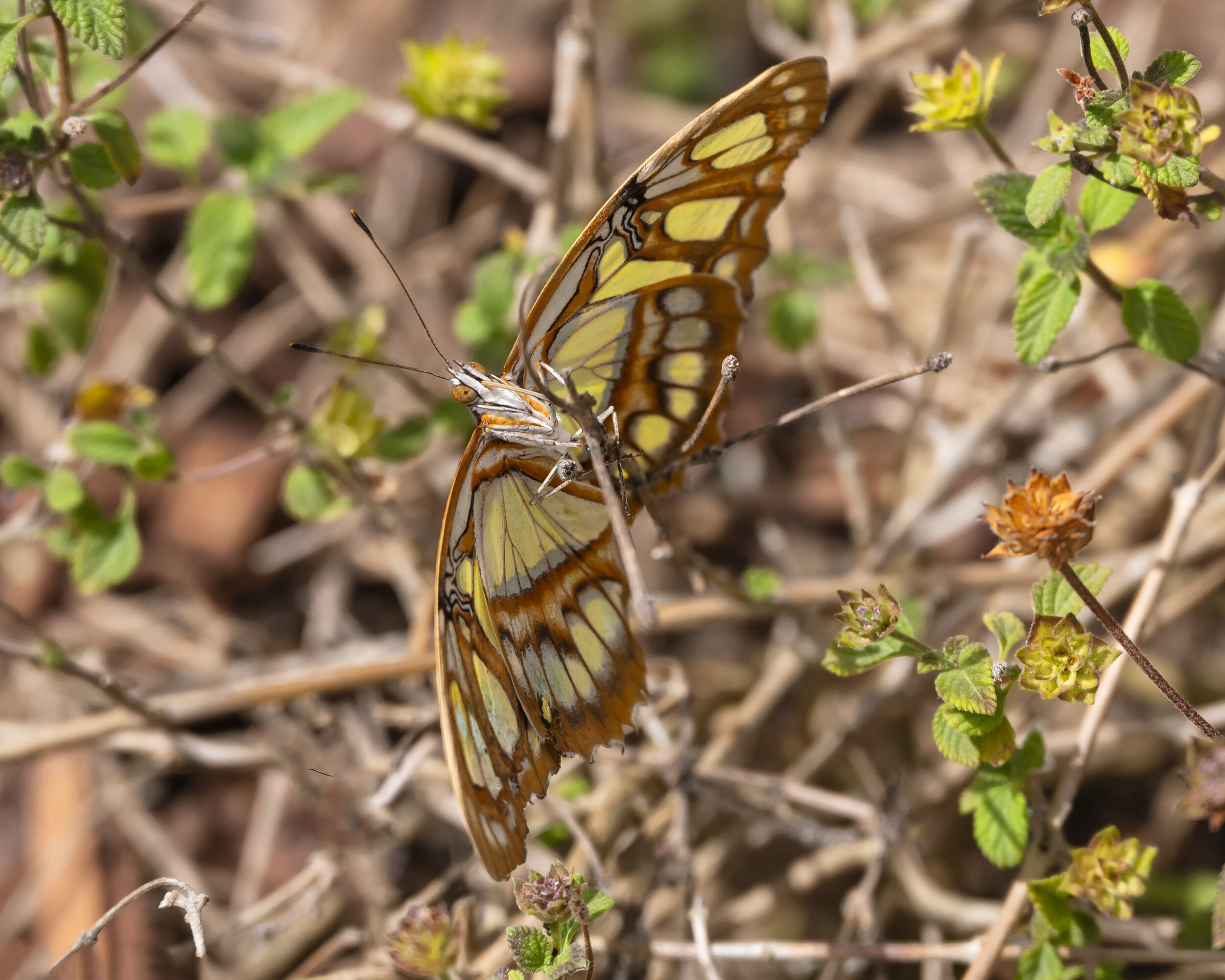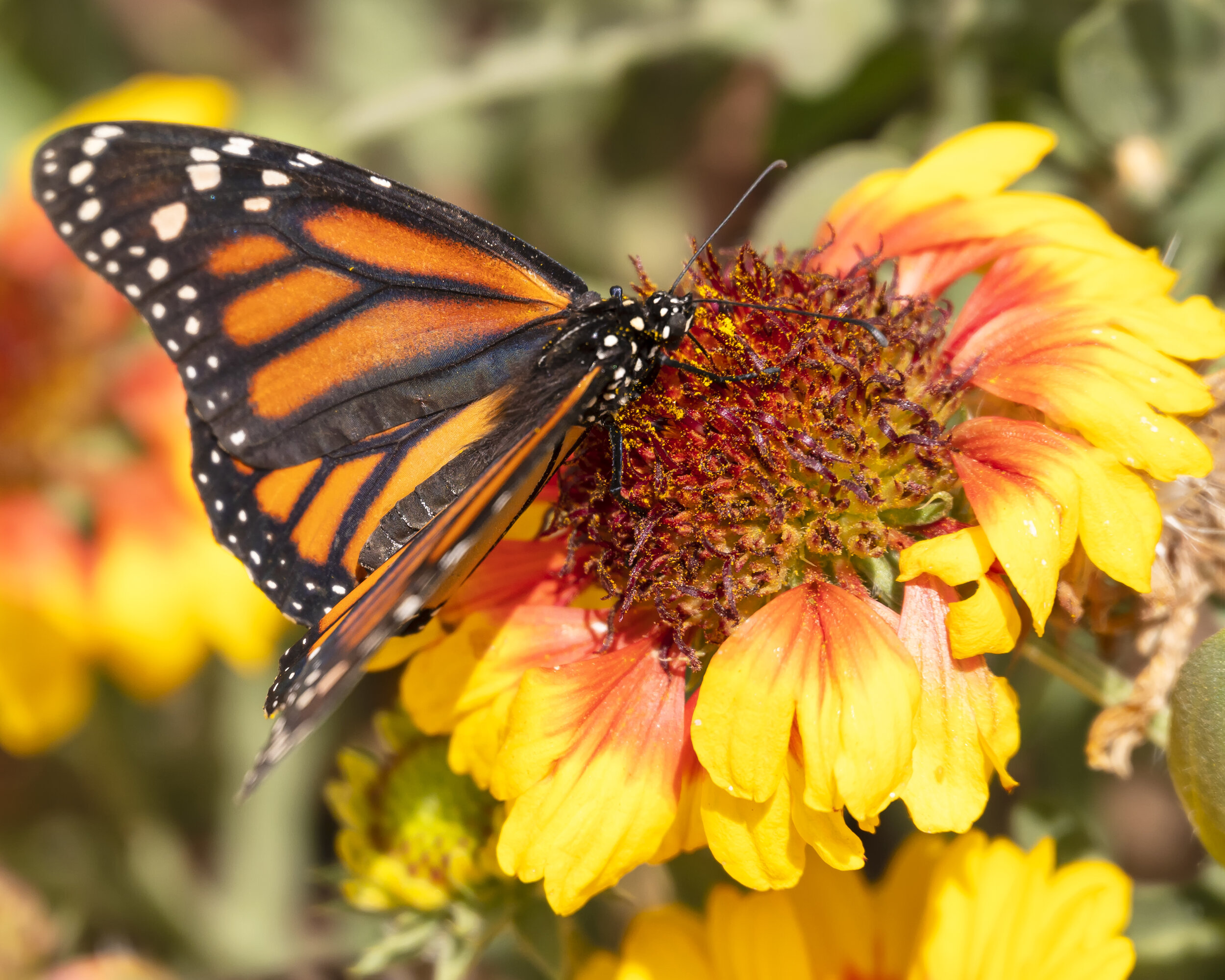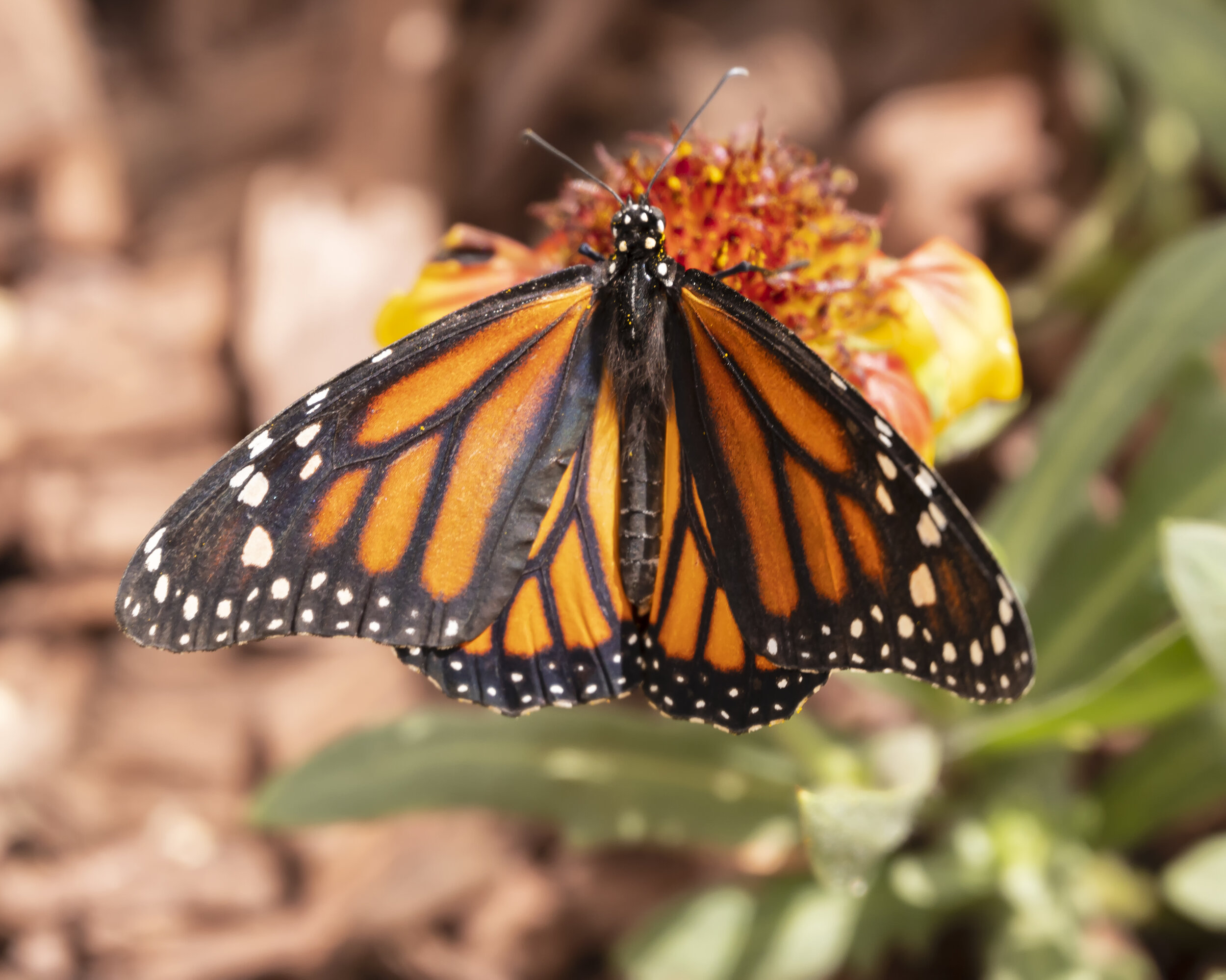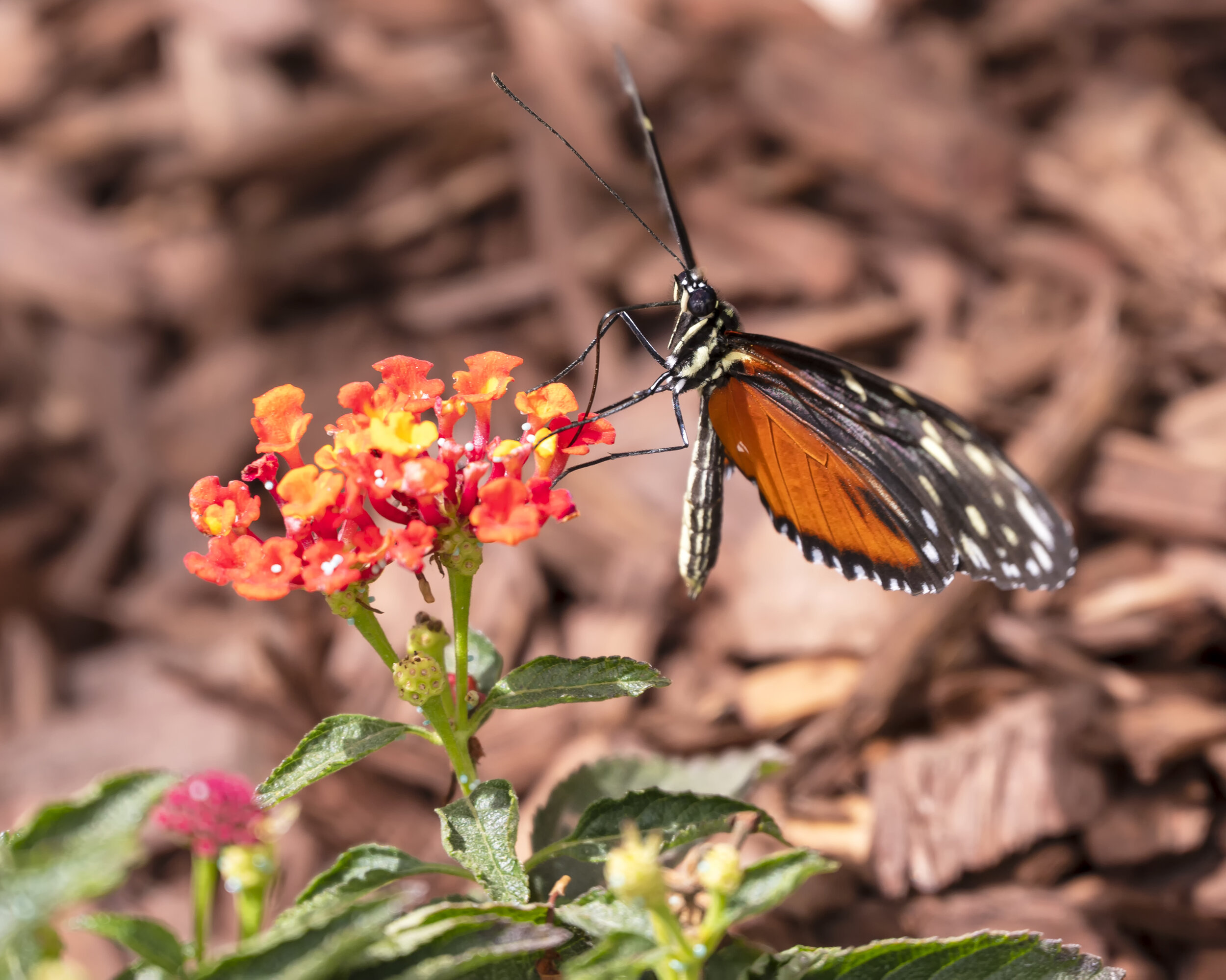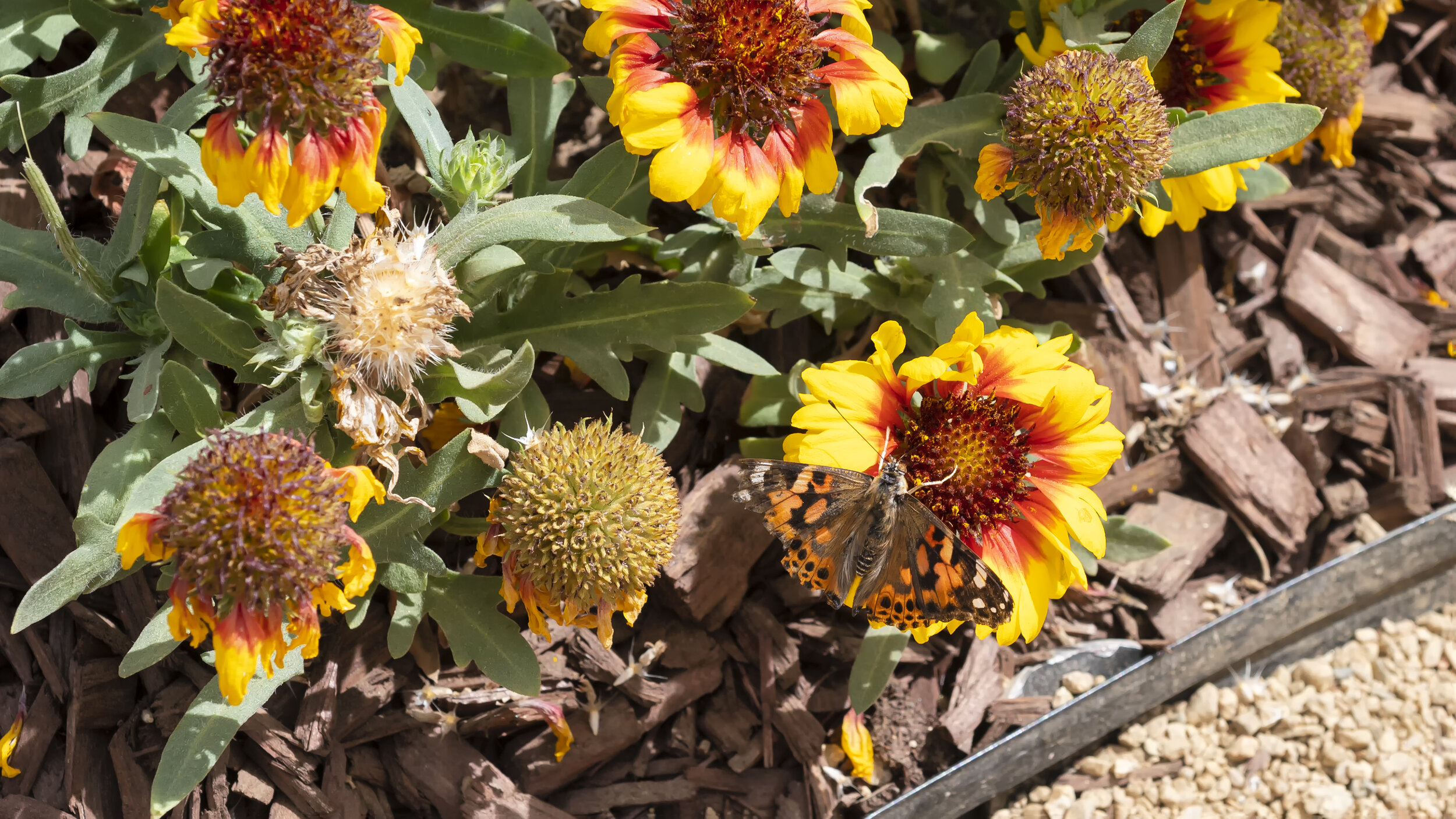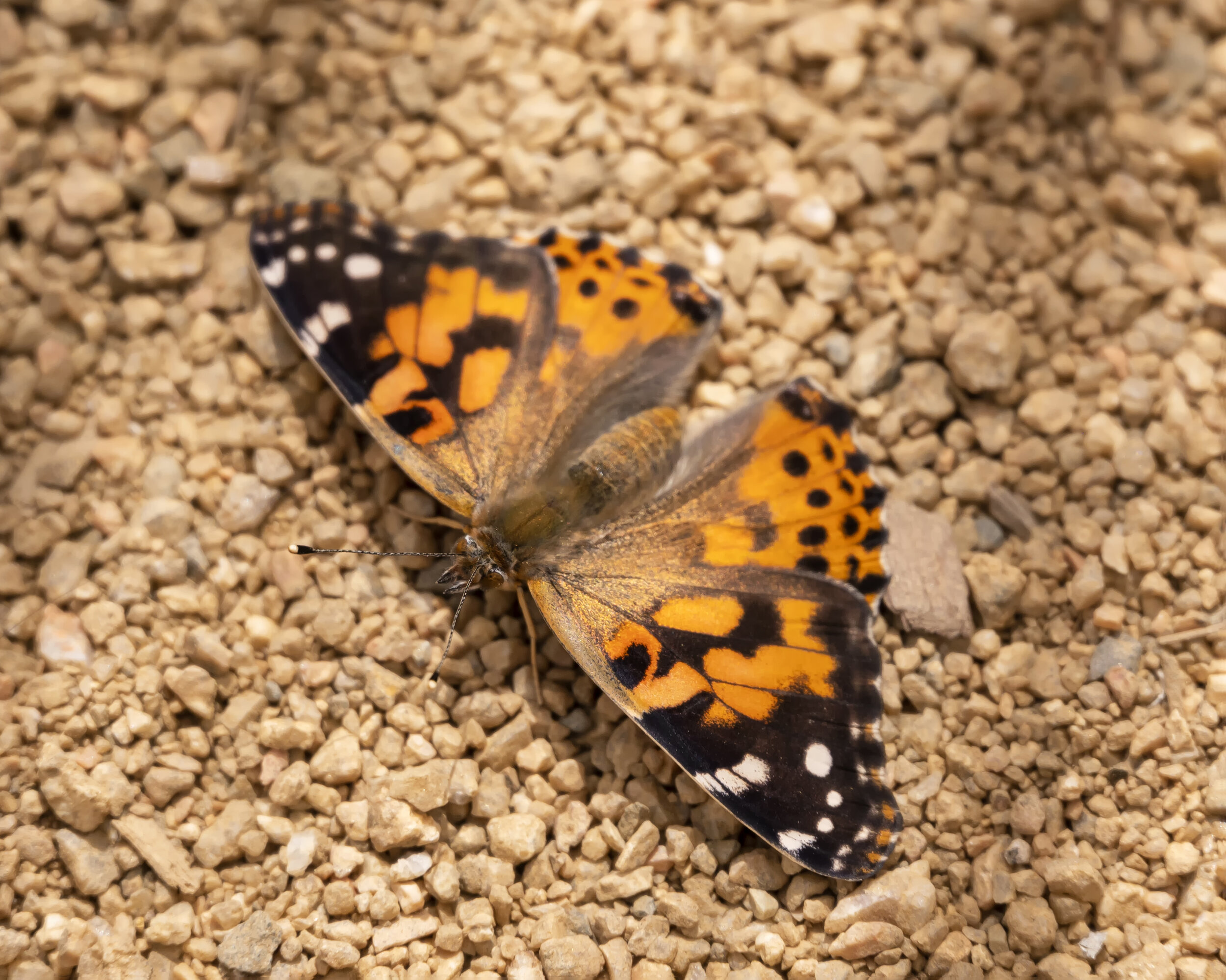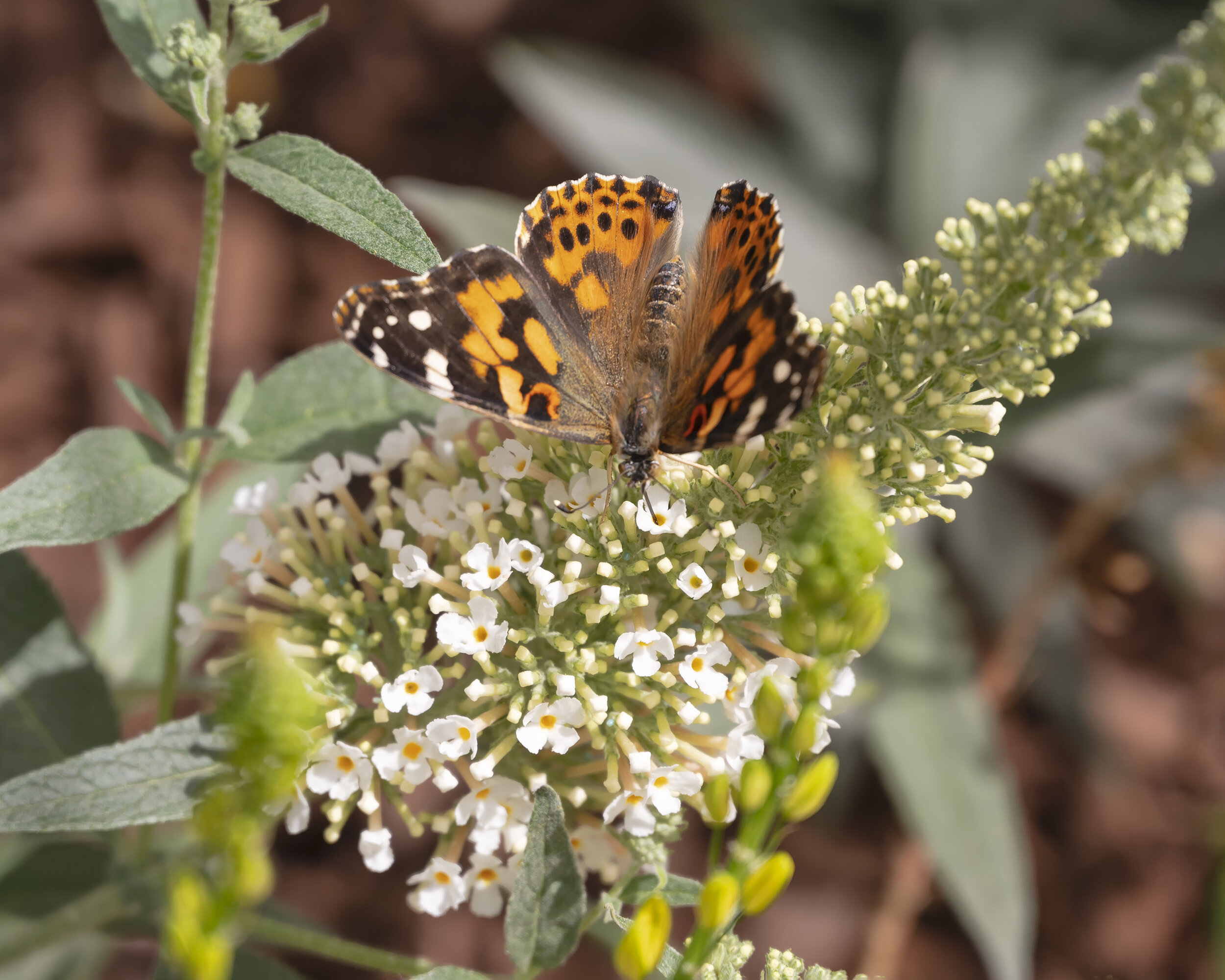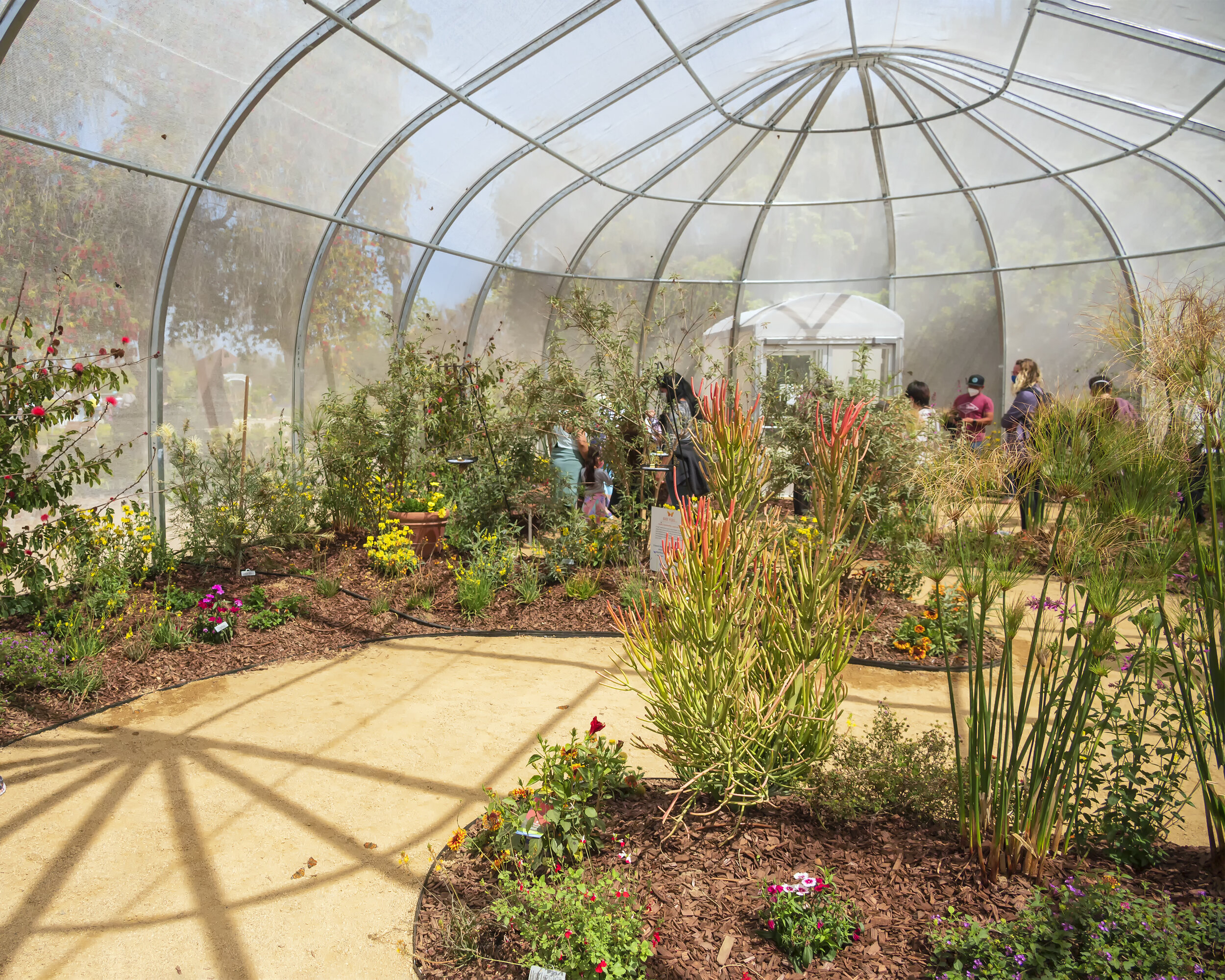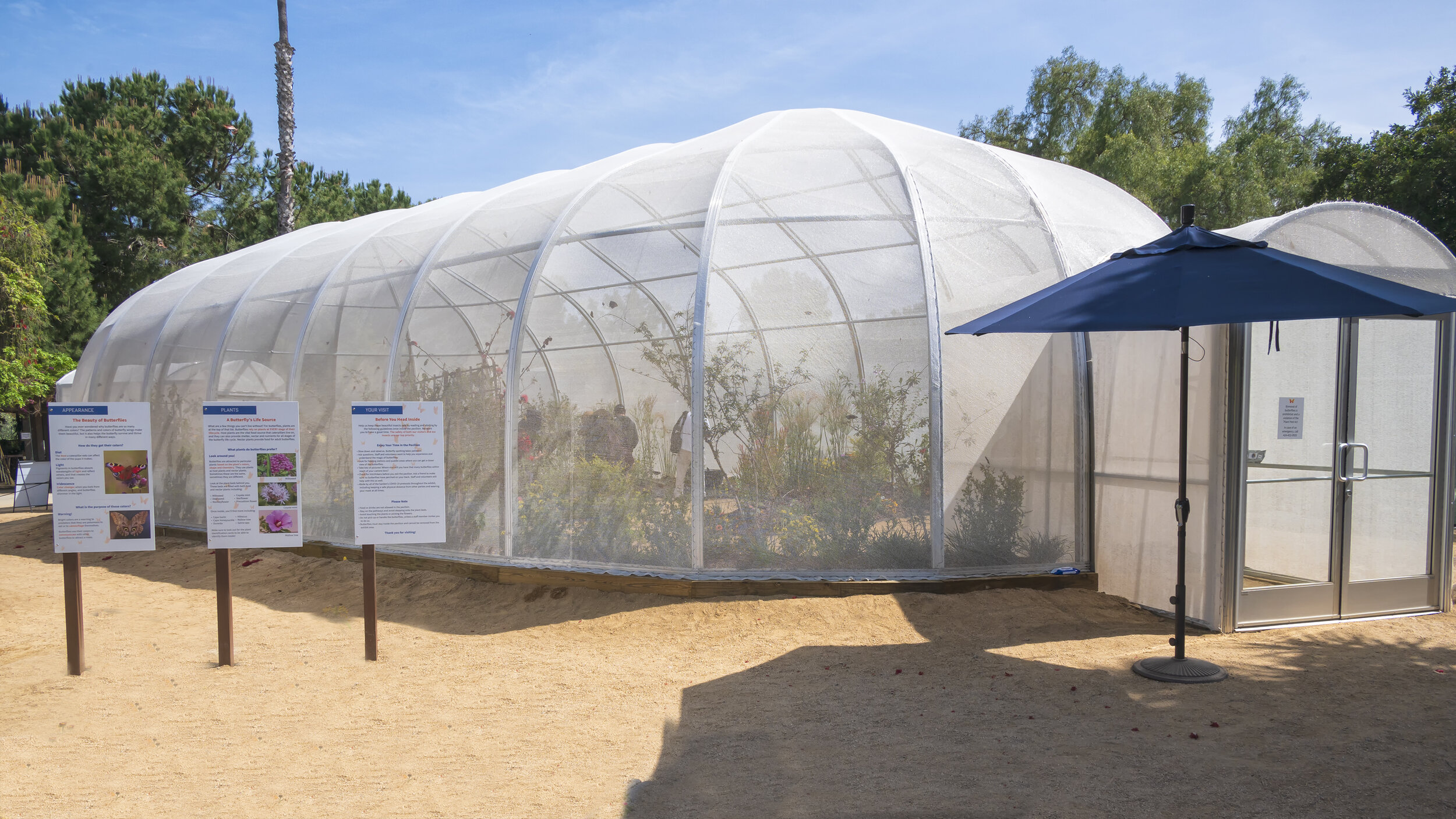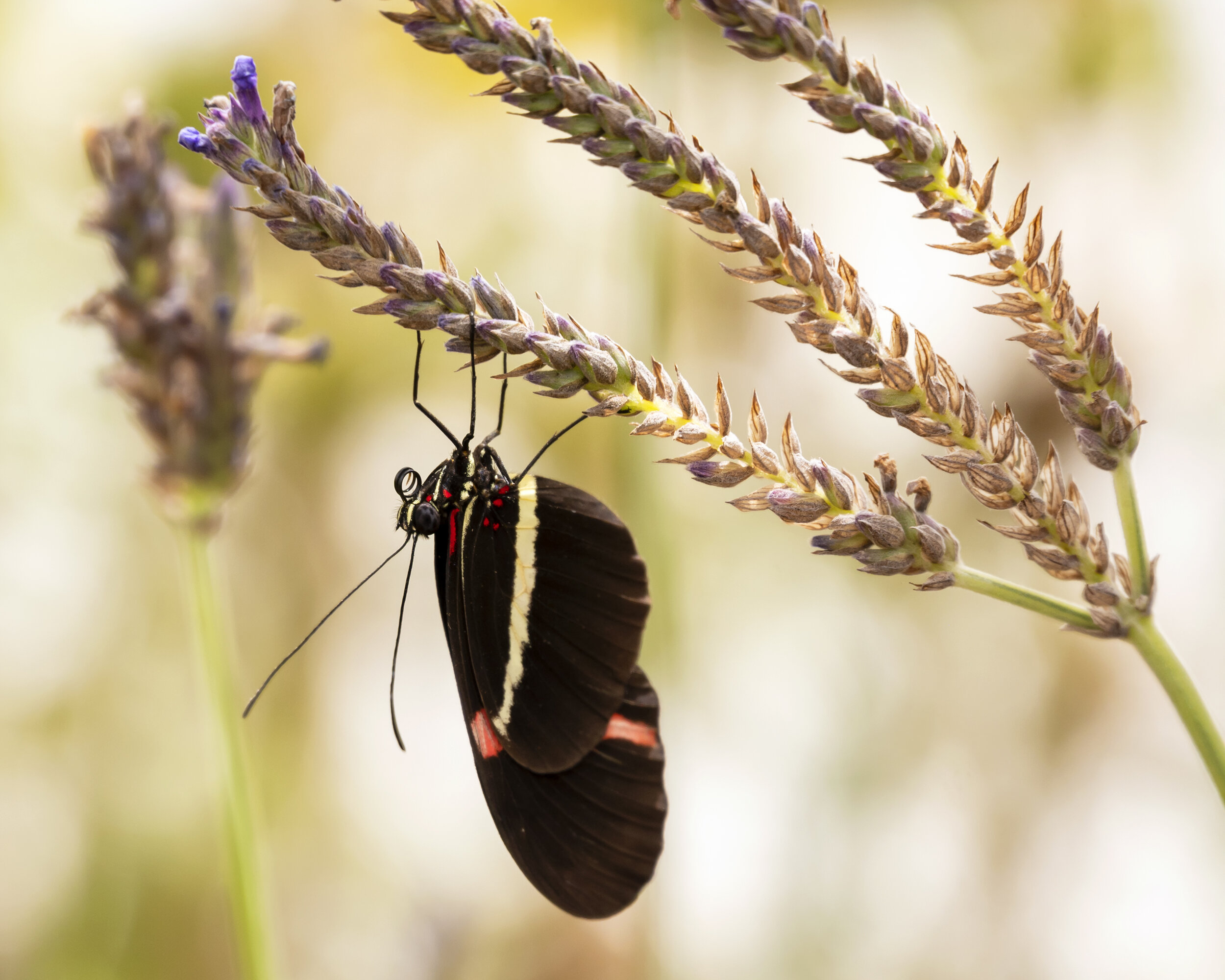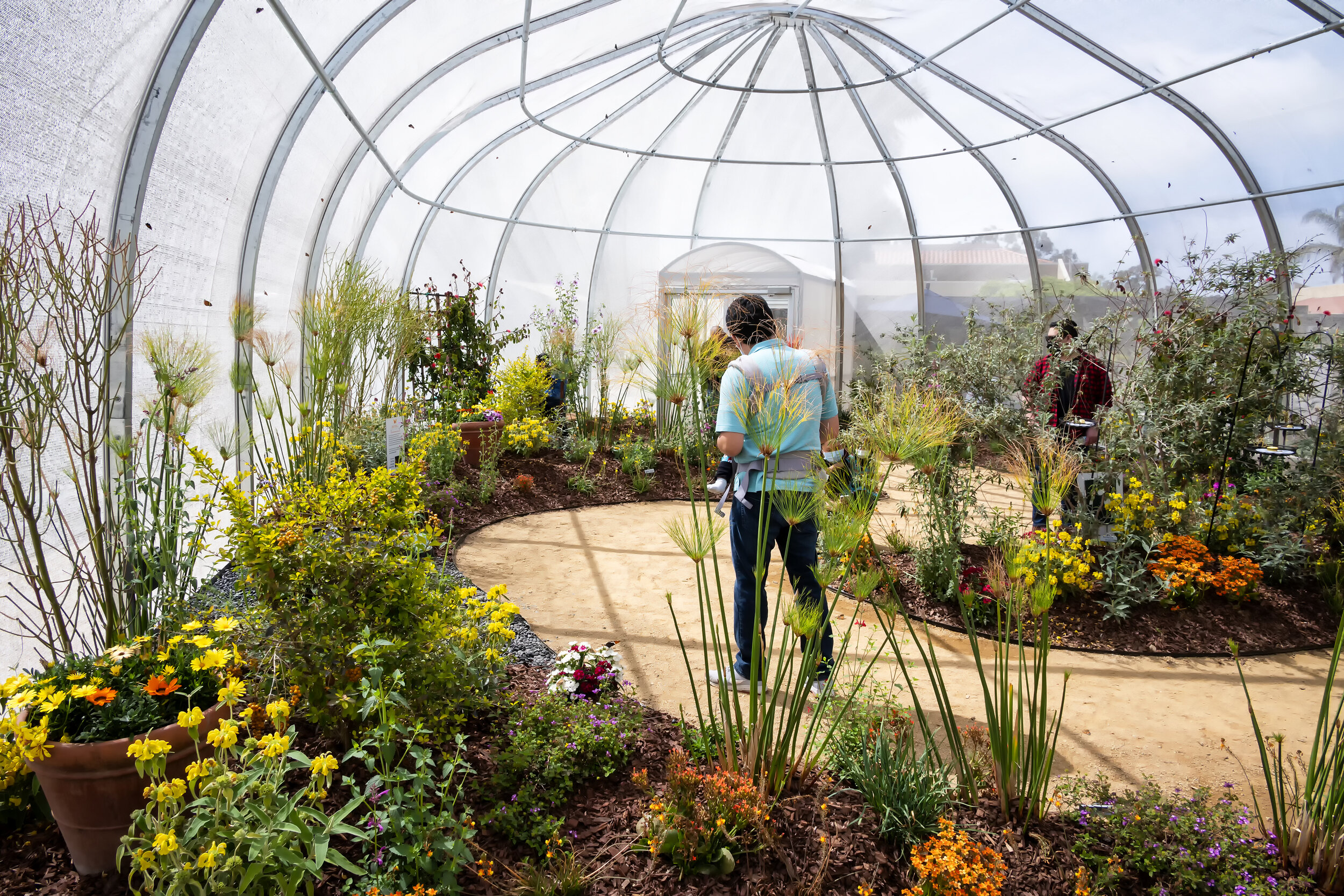SOAR Takes Flight at South Coast Botanic Garden: Butterflies for Thee By Educator, Photographer and Storyteller Steve Tabor
SOAR Takes Flight at South Coast Botanic Garden: Butterflies for Thee
By Educator, Photographer and Storyteller Steve Tabor
Pollinators such as bees, butterflies and hummingbirds play a substantial role in maintaining nature’s critical balance. SOAR, the butterfly exhibit at the South Coast Botanic Garden (Garden), pays tribute to these beautiful, fragile creatures and provides visitors with a unique opportunity to have a close up look at their world and the role they play in ours.
Working with the Florida-based company, Spineless Wonders, the Garden custom designed a three-part exhibit that highlights the beginning stages of the butterflies’ life cycle, our local butterfly population and its environment, and a living exhibit of colorful tropical butterflies of all sizes.
Blue Morpho
Blue Morpho
Cattleheart
In addition to planning the exhibit, Spineless Wonders works closely with the United States Department of Agriculture (USDA) on acquiring the necessary permits to display the butterflies and works with butterfly farms to properly acquire and transport the butterflies to the Garden. The tropical butterflies in the SOAR exhibit were acquired from butterfly farms in Florida, Texas, and Costa Rica.
Admission to the exhibit is scheduled in 30-minute intervals on the hour and half hour. Prior to entering the Butterfly Pavilion, visitors should explore the Emergence Chamber, a pupa/chrysalis exhibit. This living exhibit showcases these tiny creatures in their cocoons and their transformation into butterflies that will be released into the Butterfly Pavilion.
The outdoor butterfly garden, adjacent to the Pavilion, incorporates local plant life that attracts and sustains the life cycle of our local butterfly population. Close examination of the plants can reveal butterfly eggs on the plant leaves and caterpillars hiding among the plants. Our local species of butterflies freely fly about the outdoor garden and often come to rest on the plants and gather nectar from the blooms.
Inside the Butterfly Pavilion provides an optimum environment for the butterflies and visitors as well. The white mesh material covering the Pavilion allows for an ample sunlight to penetrate the interior, provides air circulation, and maintains a conducive temperature for the tropical butterflies on display. The butterflies float about the exhibit and land on plants and visitors alike. You will need to carefully watch your step as some butterflies rest (“puddle”) on the ground and pathway. Others cling to the mesh material covering the Pavilion. The plants in the exhibit are not all native to Southern California but were specifically chosen to meet the nutritional and habitat needs of the butterflies in the exhibit. The winding pathway through the exhibit allows visitors ample viewing opportunities of the butterflies.
Hewisons
Giant Swallowtail
Hewisons
MaryLynn Mack, Chief Operating Officer for the South Coast Botanic Garden, suggests, “Visitors should immerse themselves in the exhibit. Do not be surprised if these winged creatures land on your shoulder, head, or clothing. Pay attention to the butterflies’ behavior throughout the exhibit. The butterflies on the ground are taking water and minerals from the ground. The butterflies on the “Feeding Station” are taking the nectar from the pieces of fruit place on the station. Lastly, be sure to read the interpretive signs when you’re in the exhibit.”
Gulf Fritillary
Malachite
Monarch
Monarch
Although the exhibit can be quite peaceful, it is also quite a dynamic environment. Each visit to the exhibit can be quite a different experience. Mack points out, “The average natural lifespan of a butterfly is approximately two weeks. We find this to be consistent with our experience in the exhibit. As a result, the Garden replenishes the Butterfly Pavilion on a weekly basis using hatched butterflies from the pupa/chrysalis exhibit and shipments from butterfly farms. Another factor to the overall experience is the weather. According to Mack, “Butterflies tend to be more active during sunny warm periods and less active on cooler or overcast periods. Depending on the time of day, the exhibit can have quite a different feel.”
Painted Ladies
Zebra Longwing
SOAR will run through July 31, 2021. The exhibit is open during the Garden’s regular hours, from 8:00 a.m. to 5:00 p.m., the last exhibit admission time is 4:00 p.m. There is an additional $5.00 entry fee for adults and children to enter the exhibit. Tickets for the exhibit can be purchased online prior to your visit with your general admission fee or at the exhibit. Just as a reminder, general admission tickets for the Garden must be purchased online prior to your arrival.
In October, the Garden will re-open the SOAR exhibit by highlighting the endangered Western Monarch Butterfly. Due to its endangered status, live Western Monarchs will not be a part of the exhibit, but the Garden is planning on having other live species of monarch butterflies on exhibit in the Pavilion, and interpretive displays highlighting the Western Monarch Butterfly.
If you are Interested in creating your own butterfly garden at your own home, Mack suggests speaking with the Learning and Engagement Coordinators at the exhibit and visiting the Garden’s gift kiosk featuring books on the subject.
Steve Tabor Bio
This South Bay native’s photographic journey began after receiving his first 35 mm film camera upon earning his Bachelor of Arts degree. Steve began with photographing coastal landscapes and marine life. As a classroom teacher he used photography to share the world and his experiences with his students. Steve has expanded his photographic talents to include portraits and group photography, special event photography as well as live performance and athletics. Steve serves as a volunteer ranger for the Catalina Island Conservancy and uses this opportunity to document the flora and fauna of the island’s interior as well as photograph special events and activities.
Watch for Steve Tabor Images on the worldwide web.















